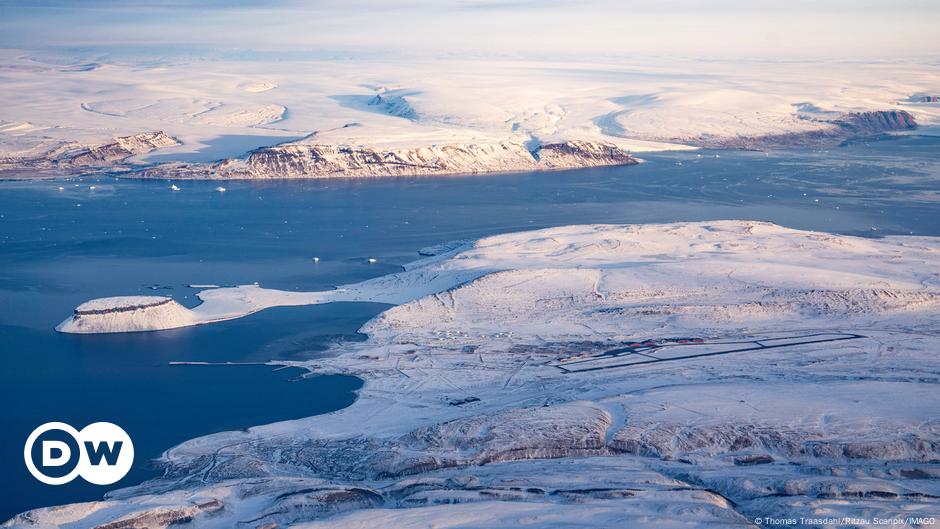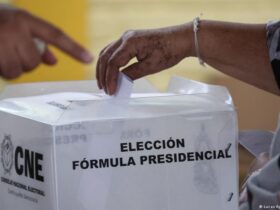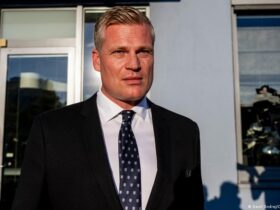Donald Trump has said that he wants the US to acquire Greenland. The US President-elect says the move is “absolutely necessary in the interests of national security and freedom around the world.” When he announced his interest in purchasing Greenland from Denmark during his first term in office, Danish Prime Minister Mette Frederiksen thought it was absolutely “absurd”. The matter appeared to be resolved.
Now, even before taking the oath of office, Trump does not suddenly rule out using economic or military pressure to bring Greenland under US control. The region is geographically part of North America, but politically part of Europe. Various European heads of government have expressed their horror at the idea that NATO’s strongest member could annex an alliance ally’s territory by force – the way Russian President Vladimir Putin has annexed large parts of Ukraine.
German Chancellor Olaf Scholz drew a parallel without naming Trump: “The principle of the inviolability of borders applies to every country, whether it is located to our east or west.”
Moscow immediately tried to use Trump’s threat to justify its actions in Ukraine. Kremlin spokesman Dmitry Peskov suggested consulting Greenland’s population about what they want, pointing to the referendum – widely seen as sham – held in regions of eastern Ukraine. Which has been taken over by Moscow.
This time the Danish premier’s response was surprisingly satisfactory: “We need very close cooperation with the Americans. The United States is our closest ally,” Frederiksen said. According to his office, he has since had a lengthy phone call with the visiting US president about Greenland.
‘We don’t want to be Danes. “We don’t want to be Americans.”
What are Trump’s intentions? Ulrik Pram Gad of the Danish Institute for International Studies in Copenhagen told DW that the president-elect’s steps are in line with the so-called Monroe Doctrine that dates back to the 19th century: “The United States will not allow any hostile powers to enter the North American continent. But the catch is that they want to make sure that no Chinese or Russians are established in Greenland.”
Frederiksen has repeatedly said that it is up to Greenlanders, not Copenhagen, to decide Greenland’s future.
Relations between Denmark and Greenland have existed for hundreds of years. Greenland was a Danish colony until 1953 and is now a self-governing territory of the Kingdom of Denmark. Since 2009, the island has had the right to declare itself independent in a referendum. However, the island and its 57,000-strong population are heavily dependent on Danish state funds.
Greenland’s Prime Minister Mute Egede is in favor of independence, but he does not want Greenland to later become dependent on another state. He once said in Frederiksen’s presence, “We don’t want to be Danish. We don’t want to be Americans. We definitely want to be Greenlanders.”
Ice-free shipping due to climate change
Greenland’s resources are a major reason why it is of interest to other countries. For example, there are oil, gas and rare earths, which are needed to make electric cars and wind turbines, among other things. At present, China has a near-global monopoly on these vital minerals.
About 80% of the island is covered with thick ice sheets, but climate change has resulted in the ice retreating, making the deposits more accessible. However, the government of Greenland has until now blocked mining for environmental reasons.
Rising temperatures and decreasing ice mean ships can also more easily navigate the waters around Greenland, making journeys between Europe and Asia much shorter than through the Suez Canal.
What applies to merchant ships also applies to Russian warships and nuclear submarines. Both Russia and China are trying to increase their influence in the Arctic.
American soldiers deployed in Greenland
The United States has had a presence in Greenland for several decades. When Nazi Germany occupied Denmark in 1940, American troops landed in the then Danish colony to stop the German invasion.
US President Harry Truman offered to buy Greenland in 1946 for $100 million in gold. Denmark refused, but a few years later agreed to a permanent US military presence, which became part of NATO’s Cold War defense strategy.
The military base, now called Pitufik Space Base, has been significantly expanded and has an early warning system for missiles – because the shortest route from Europe to North America is through Greenland.
Why pay for what you already have?
Buying an island is less far-fetched than it sounds. Many such examples have come to light in the past. In the 19th century, America purchased Florida from Spain, Louisiana from France and Alaska from Russia. Denmark itself sold its share of the Virgin Islands in the Caribbean to the US in 1917 for $25 million.
However, the Prime Minister of Greenland has repeatedly rejected the idea: “Greenland is ours. We are not for sale and will never be for sale.”
However, Ulrik Pram Gad says that at the moment Greenland cannot take this decision itself. “Technically, if Greenland declares independence, they can do whatever they want with their independence,” and could, for example, join the United States. However, he said the idea of gaining sovereignty and then selling it would seem ridiculous to Greenlanders.
Still, he said, it was conceivable that the United States would offer Denmark larger subsidies to Greenland in exchange for security agreements. “But it’s very difficult to imagine that dealmaker Trump is paying so much money for something that they already have, in the sense that the US has had an agreement with Denmark since 1951, which was ratified by Greenland in 2004. “Co-signed, that the United States has substantive military sovereignty over Greenland.”
Trump has already achieved something
If Trump’s main aim was to push Denmark to pay more attention to security around Greenland, you could say that he has already partially achieved his goal: Denmark has pledged to invest around €1.5 billion for the Arctic. Additional military spending has been announced. Although it was already planned, it was announced just hours after Trump’s threat, which the Danish defense minister called an “irony of fate.”
Furthermore, the Danish Prime Minister’s surprisingly favorable response indicates that the Danish government wishes to avoid angering NATO’s leading power.
Trump can achieve something in Greenland too. Ulrik Pram Gad says he could obtain more explicit security guarantees that, in the event of independence, Greenland would never leave NATO or try to force the US to give up its military base there.
But the Danish political scientist suspects that the case also reveals something about a future US president that goes beyond the Greenland issue: “During the next four years we are all going to face the same trouble. Whenever Donald Trump does something Says, we’ll all run around like headless chickens trying to figure out what’s behind it, maybe he doesn’t even know.”
This article was translated from German.
While you’re here: Every Tuesday, DW editors provide insight into what’s happening in German politics and society. You can sign up for the weekly email newsletter Berlin Briefing here.






Leave a Reply